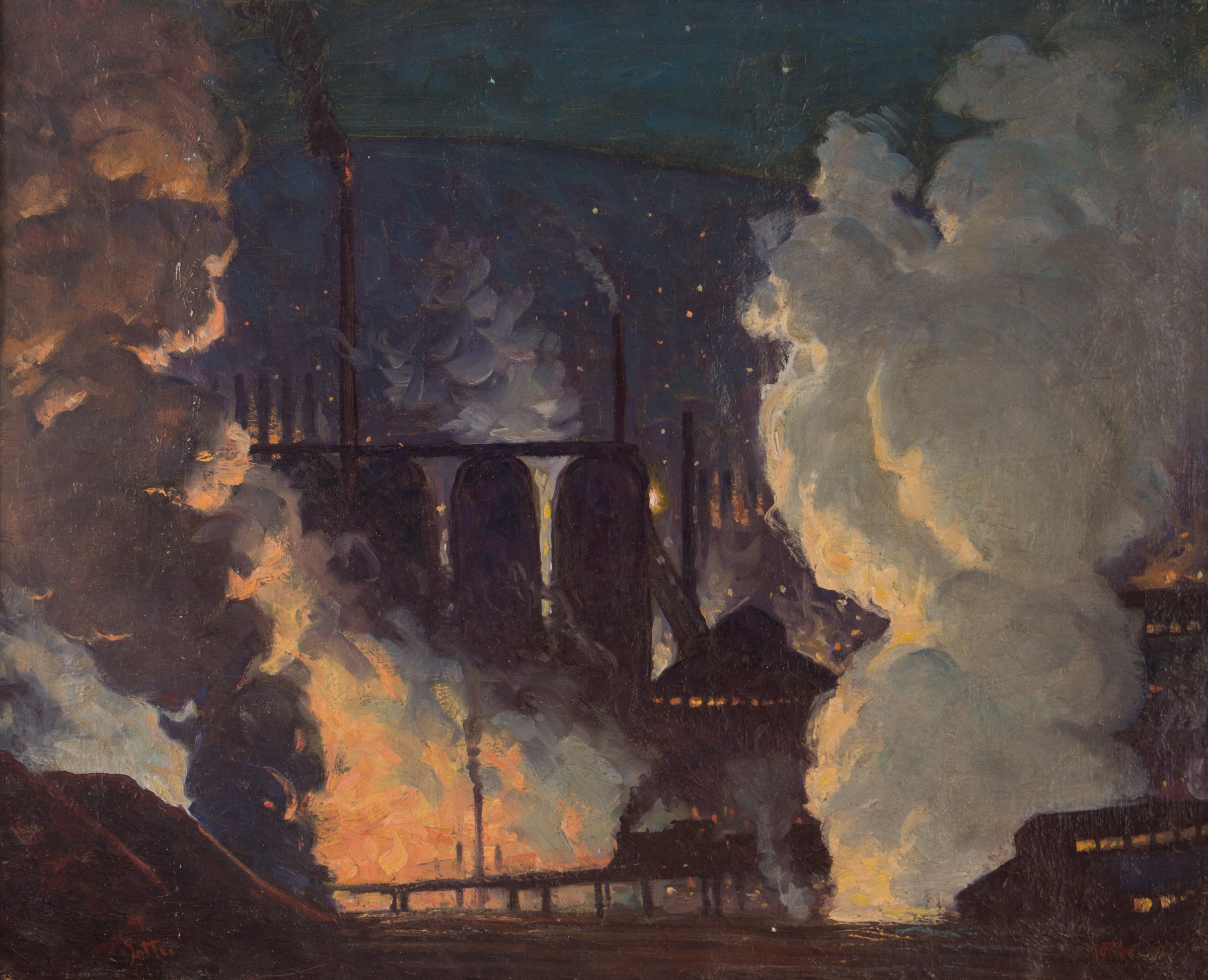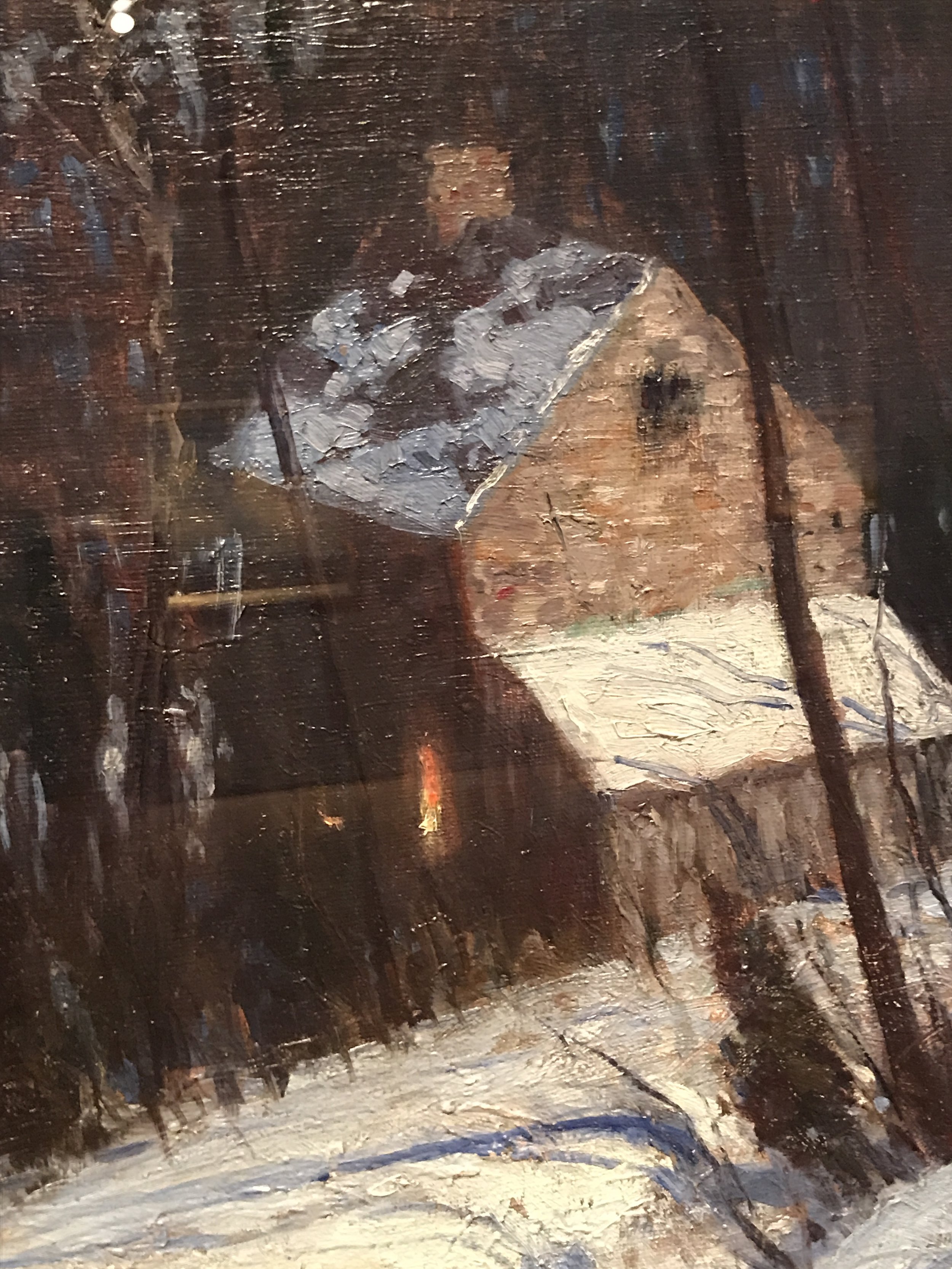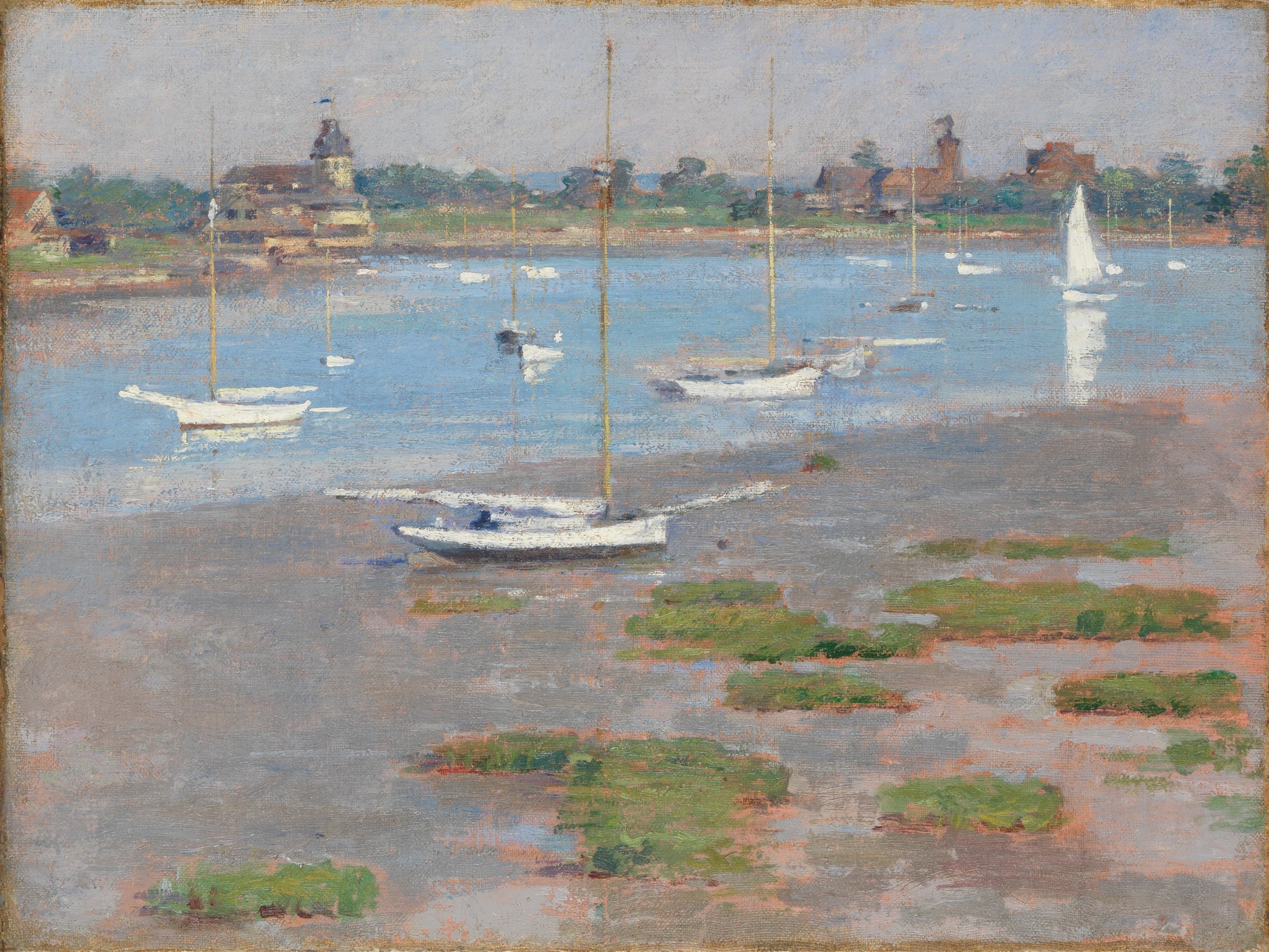George Sotter's early contemporaries included Robert Henri and John Sloan who came to be associated with the "Ashcan School" and relocated from Philadelphia to New York City early in the 20th century. These artists believed their work should engage with the contemporary realities, all aspects of modern life. They painted a transforming cityscape that included elevated trains, ghettoes and scenes from daily life. Their gritty realism, however, soon became challenged by modern photography. By the end of World War I, during the boom of the 1920s, a more optimistic mood prevailed and painted images of New York by Ernest Lawson, Georgia O'Keeffe and Edward Hopper portray a very different tone and style than those of the previous generation. Nonetheless, this mood gave way to the Depression and World War II. When we look at Sotter's painting of the Blast Furnace we must consider competing narratives of artists who depicted the Great Migration, the hard edges of industrialism, and the nostalgia of Norman Rockwell as a frame for his 1942 painting.
Suggested Reading:
Frances K. Pohl. Framing America: A Social History of American Art. Third Edition. New York: Thames and Hudson, 2012.
William B. Scott and Peter M. Rutkoff. New York Modern: The Arts and the City. Baltimore: The Johns Hopkins University Press, 1999.


